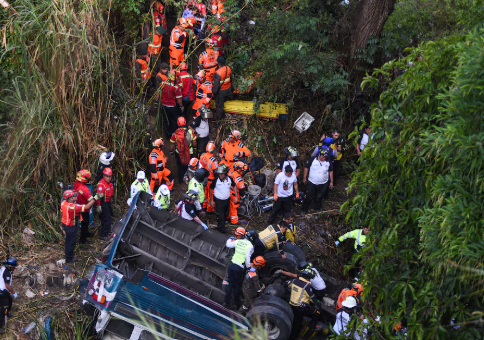GUETEMALA CITY: Guatemala City witnessed one of the deadliest road tragedies in recent years on Monday as a passenger bus carrying more than 70 people crashed through a guard rail and plunged into a ravine, killing at least 51 individuals.
Rescuers from the municipal fire department recovered 51 bodies from the wreckage of the bus, which had fallen 20 metres (65 feet) into a river polluted with sewage and debris. Victor Gomez, spokesperson for the Volunteer Firefighters, confirmed, “We have 51 bodies in the provisional morgue.”
Ten injured passengers were successfully pulled from the wreckage and rushed to local hospitals for treatment.
President Bernardo Arevalo expressed deep sorrow over the tragic incident, declaring a period of national mourning. “Today is a difficult day for the Guatemalan nation,” he stated, offering condolences to the grieving families.
Authorities reported that the driver lost control of the bus, which then collided with several smaller vehicles before smashing through a metal guard rail and tumbling into the ravine. Carlos Hernandez of the fire department described the scene: “The bus kept going, broke through the railing, and fell into a ravine until it reached the sewage-contaminated river.”
The bus was en route from San Agustin Acasaguastlan in El Progreso, approximately 90 kilometres northeast of Guatemala City.
Communications Minister Miguel Angel Diaz revealed that initial investigations showed the bus was nearly 30 years old but still licensed for operation. Authorities are investigating whether passenger overloading or mechanical failure played a role in the crash.
The incident highlights ongoing concerns about road safety in Latin America. In January 2018, 52 people died in Peru when a bus veered off a cliff onto a beach near Lima. Similarly, in March 2015, Brazil witnessed a deadly tourist bus crash that claimed 54 lives in Santa Catarina state.
Guatemalan authorities have vowed to intensify safety measures following this latest tragedy, as rescue teams continue to search for additional victims and provide support to survivors.






















